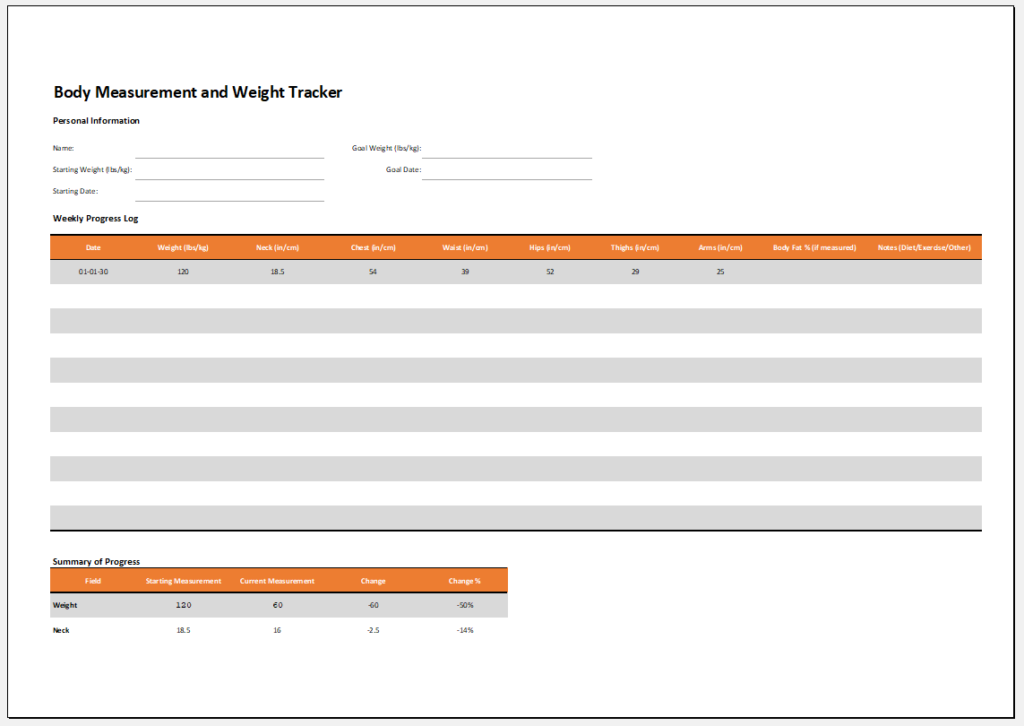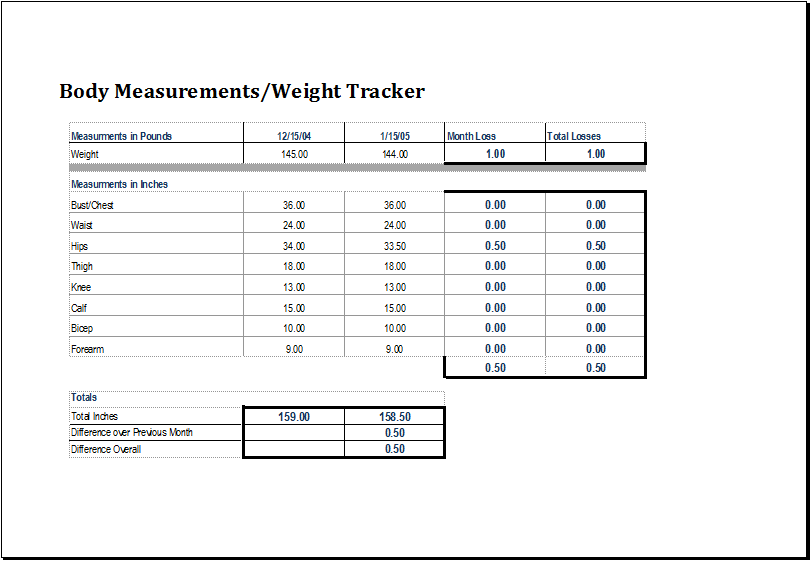Body Measurement and Weight Tracker
Many health-conscious people are concerned about their body measurements and weight. Examining body measurements and weight can tell if a person has gained weight.
People working out and following a diet plan to lose weight are much more concerned about their weight. They use the weight tracker to know if their efforts are fruitful. The result of the tracker encourages the person to lose more.
Body measurement is a strategy for tracking weight loss and displaying muscle building. A weighing scale cannot show precisely how much and from where you lose weight. If your body part measurements decrease, you are satisfied that your dieting workout is working. However, you may only lose a little weight a week.
Here are the body parts to measure and how to measure:
- Neck – Measure around the smallest circumference
- Waist – Measure around the thinnest circumference; if you don’t have the waistline straight, measure the area where the belly button lies
- Arms – Measure around the fattest part of your arm
- Chest–bursting part of your chest under the armpits, around your shoulder blades has to be carefully measured
- Hips – Measure the most expansive area of your hips.
- Thighs – Measure the circumference of the fattest zone part of your thigh,
- Calves – The most significant part of your carved is measured appropriately
What are the benefits of using body measurement and weight tracking?
Here are some of the key benefits one can avail by downloading the body measurement and weight tracker:
- It enables the user to calculate the body’s mass, using which the body mass index can be calculated. The body mass index tells if the person’s weight is in the recommended range.
- The tracker also enables the user to compare the current weight and body measurements reading with the previous one to evaluate the results obtained from dieting and exercise.
- The tracker also tells if the person has reached his goals or if weight is lost. The total time required to achieve the goal can also be determined easily with the help of a weight and body measurement tracker.
What should be included in the tracker?
- One key factor to be added to the tracker to calculate the weight more appropriately is the person’s height, which can be measured in centimetres or feet.
- The person’s weight is another crucial detail to consider when tracking everything related to body measurement. Weight can be measured in kilograms or pounds.
- The body measurements of body parts such as chest, hip, legs, feet, and shoulders are also recorded.
- The tracker also measures and records the body’s temperature, which can be measured in Celsius or Fahrenheit.
- The tracker should also include details on body mass index (BMI).
Tips When Measuring:
Measure your body parts at a fixed time of the day. Like if you measured yourself on last Thursday morning, later, measure again on a Thursday morning
A free body measurement chart from online templates you can download and print out to keep track of your measurements. Be sure to put down the initial date of the measurement, then measure biweekly and note the date. Whatever positive or negative changes, they will be told to come and note down the readings in the downloaded chart. Even if it’s too small because of the total measurement by subtracting it from the initial measurements at the bottom.
Preview
Download your file below.
- Product Sales Tracker Template
- Debit Memo Template for Excel
- Winter Attire Inventory
- Financial Projections Worksheet
- Employee Absence Tracker
- Weekly Sales Report Template
- Budget Vs Actual Statement
- Remote Work Attendance Tracker
- Mileage Expense Report Template
- Fitness Calendar Template
- Project Gantt Chart
- Daily Attendance Tracker for an Individual Employee
- Overtime Hours Tracker Template
- Vacation and Leave Tracker Template
- Departmental Expense Report Template
- Event Planning Gantt Chart
- Employee Attendance Dashboard
- Monthly Study Reminder & Planner
← Previous Article
Business Planning Checklist TemplateNext Article →
Dinner Party List with Menu

Leave a Reply